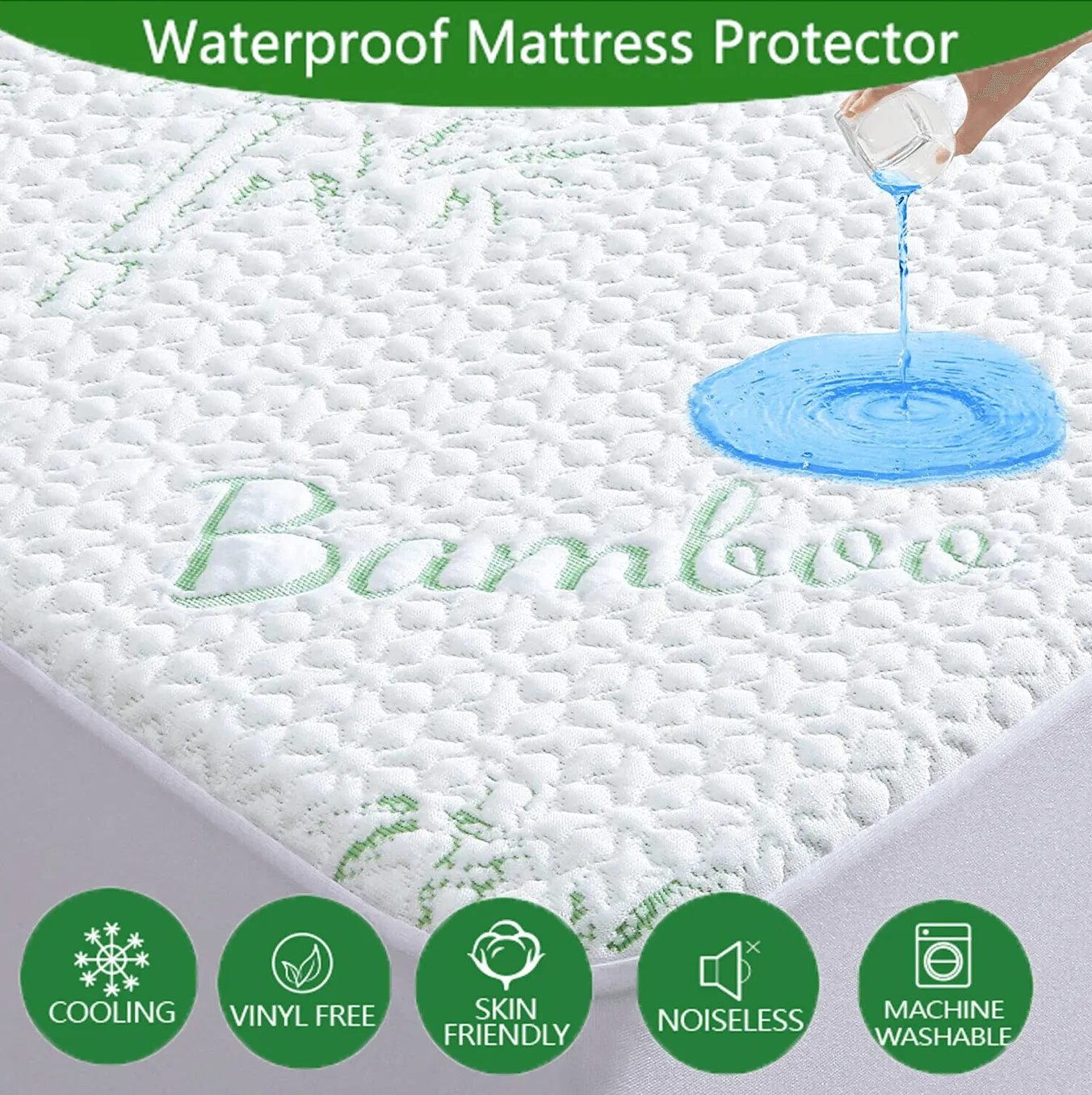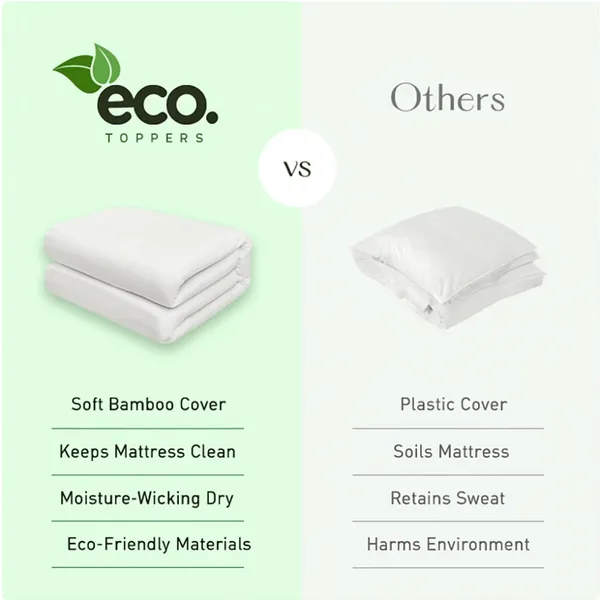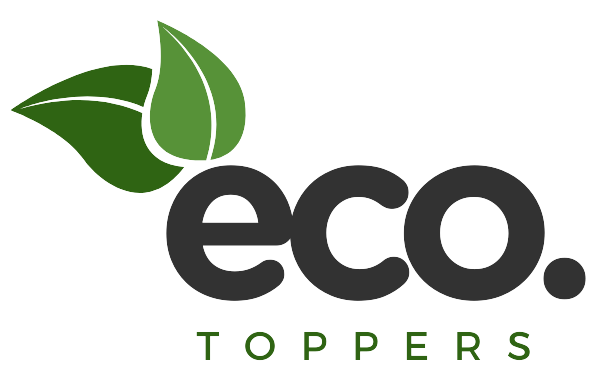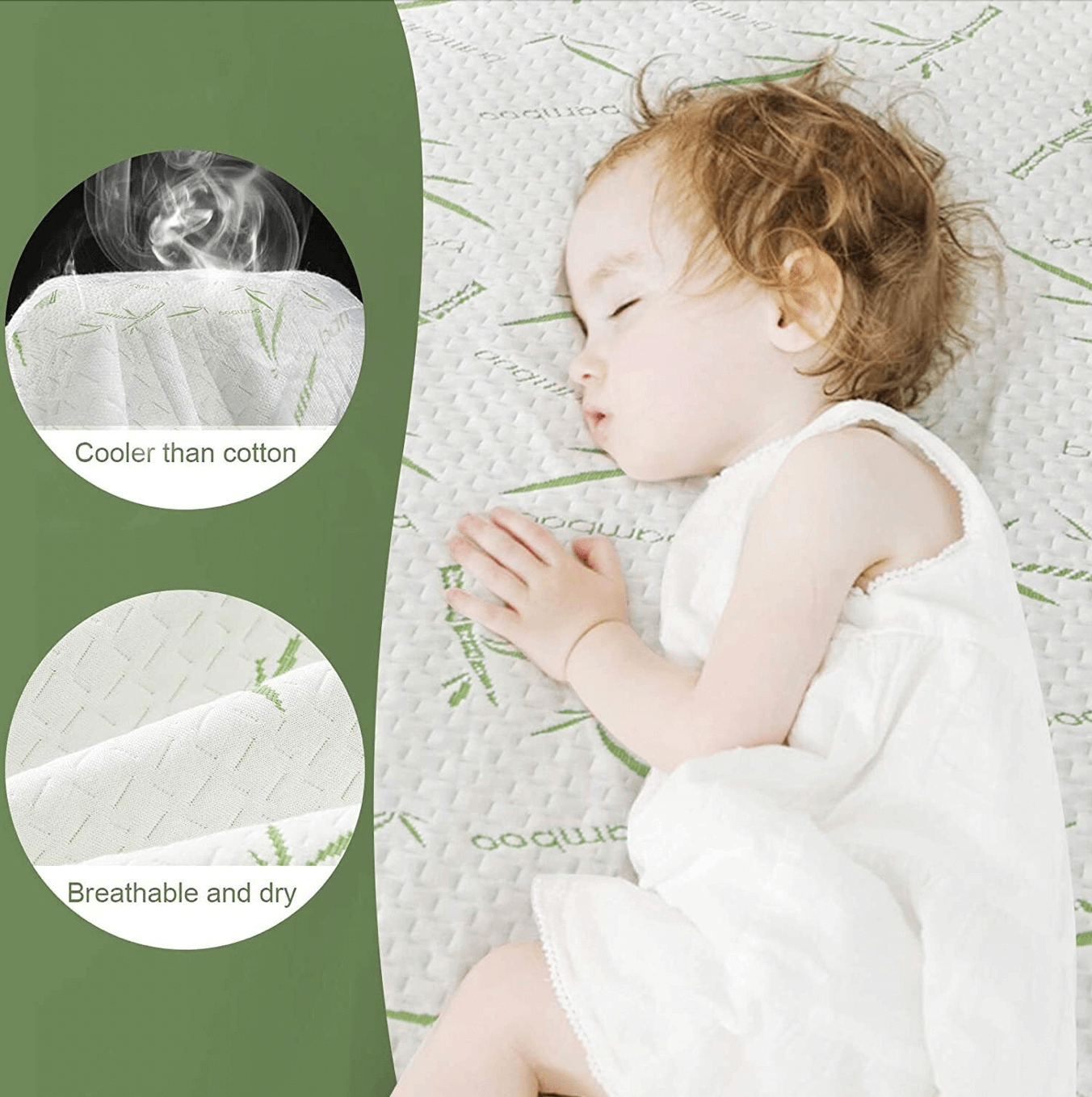Discover Eco Toppers: Best Organic and Bamboo Mattress Protectors in Australia for Sustainable, Hypoallergenic Sleep
Eco-friendly mattress protectors can transform how you sleep by combining sustainable materials with practical hygiene and comfort benefits. This guide explains how bamboo and organic options deliver those outcomes. Readers will learn what makes bamboo mattress protectors effective for temperature regulation, hypoallergenic performance, and pressure-relief support, plus how to choose the right protector for different sleep needs. Many sleepers struggle with night sweats, dust-mite allergies, or chemical sensitivities, and choosing a chemical-free, breathable protector can reduce these problems while supporting a lower environmental footprint. This article maps the full decision process: why eco-friendly protectors matter, what technical features to look for, how certifications verify safety, material comparisons, customer feedback trends, care and maintenance advice, and where to purchase reliable options in Australia. Throughout, keywords like bamboo mattress protector benefits Australia, hypoallergenic bamboo mattress protector, and cooling mattress protector for hot sleepers are used to help you find practical solutions and make an informed purchase.
Why Choose Eco-Friendly Mattress Protectors from EcoToppers?
An eco-friendly mattress protector is a breathable, sustainably produced cover that shields your mattress from spills, allergens, and wear while using low-impact materials and fewer chemicals. These protectors work by combining a natural top layer—often bamboo fibre—with functional elements such as a membrane layer for water resistance and a deep-pocket skirt for a secure fit, delivering health, environmental, and comfort benefits simultaneously. Choosing such a protector reduces exposure to harsh finishes and synthetic fibres, which can irritate sensitive skin and attract dust mites, and it improves sleep continuity through better moisture-wicking and temperature regulation. The remainder of this section breaks down the primary health, sleep, and environmental reasons to prefer eco-friendly protectors and explains practical implications for allergy sufferers and hot sleepers.
EcoToppers' designs focus on bamboo-based protectors and toppers that prioritise natural performance and reduced chemical exposure. The brand offers bamboo mattress protectors and bamboo mattress toppers in plush 5cm and 10cm variants, presenting options for comfort and support without synthetic overlays. EcoToppers also offers customer-friendly policies, including a satisfaction policy, convenient delivery options across Australia, and support for NDIS participants, which help build confidence during your purchase.
Eco-friendly mattress protectors deliver three main categories of benefits:
- Health and hygiene benefits include reduced allergen exposure and fewer irritant chemicals for sensitive skin.
- Environmental benefits centre on lower resource use and biodegradable materials compared with conventional synthetics.
- Comfort benefits cover breathability, moisture-wicking, and improved sleep temperature regulation.
These combined advantages explain why eco-friendly protectors are increasingly preferred by consumers seeking sustainable, hypoallergenic bedding that also enhances sleep quality.
What Are the Health Benefits of Hypoallergenic and Chemical-Free Mattress Protectors?

Hypoallergenic and chemical-free mattress protectors reduce contact with common irritants by using fibres and finishes that discourage dust mites and avoid residual pesticides or finishing agents. The mechanism is straightforward: naturally antibacterial fibres and tightly woven textiles limit moisture and allergen accumulation, which decreases the microscopic environments these allergens need to thrive. For allergy sufferers, switching to certified, low-chemical protectors often results in fewer nocturnal symptoms and improved breathing during sleep, supporting better sleep continuity and reduced wakefulness. Understanding these immediate health outcomes helps prioritise features when shopping for an eco-friendly mattress protector.
These health improvements are most meaningful when combined with regular mattress hygiene—washing bedding and using a protector—which amplifies benefits over time. Choosing materials with demonstrable hypoallergenic properties complements medical management for allergic individuals and supports overall sleep hygiene strategies. The next subsection explains how bamboo specifically contributes to these health and comfort effects.
How Do Sustainable Materials Like Bamboo Enhance Sleep Quality?
Bamboo fibres enhance sleep quality primarily through high breathability and moisture-wicking capability, which transports sweat away from the skin and into the fabric for evaporation. At a material level, bamboo fibre porosity increases airflow across the sleep surface, reducing microclimate humidity and enabling cooler, more stable skin temperatures through the night. Practically, this translates to fewer awakenings from overheating and improved sleep continuity for hot sleepers or those who experience night sweats.
Bamboo’s environmental profile also supports sustainable consumption: its rapid growth and lower pesticide inputs (relative to conventionally grown cotton) can reduce the lifecycle impact of bedding. Choosing bamboo, therefore, blends immediate sleep comfort with longer-term ecological considerations, a dual benefit that many buyers now prioritise.
Why Is Choosing an Organic Mattress Protector Important for Environmental Impact?

Selecting an organic mattress protector lowers exposure to synthetic agricultural chemicals and reduces potential contamination of water and soil associated with conventional fibre production. Organic production standards emphasise reduced pesticide use, responsible water management, and social accountability, which, combined, lessen the ecological footprint of textiles. The end-user benefit is twofold: a cleaner, less chemically laden sleep surface and confidence that the supply chain adheres to higher environmental practices.
Beyond immediate environmental metrics, organic and biodegradable materials limit long-term waste by offering components that decompose more readily at end-of-life than synthetic alternatives. This contributes to circularity in home textiles and reduces embedded environmental cost across the product lifecycle, a growing concern for eco-conscious consumers.
What Makes EcoToppers’ Bamboo Mattress Protectors the Best in Australia?
EcoToppers’ bamboo mattress protectors are positioned around comfort, hygiene, and sustainable materials that together address common Australian sleep needs such as heat, allergies, and varying mattress depths. The product approach emphasises bamboo fibre covers for breathability, membranes for selective waterproofing where required, and plush topper variants for pressure relief and orthopaedic-style support. These design choices translate into practical outcomes: cooler sleep, reduced allergen load, and adaptable comfort levels via 5cm and 10cm options. The section below examines how these features work and which sleeper profiles each variant suits.
To clarify the available product variants and who benefits from them, here is a comparative EAV-style table summarising EcoToppers’ primary protector and topper variants:
| Products | Characteristic | Best for |
|---|---|---|
| Bamboo Mattress Protector (standard) | Breathable bamboo cover with protective membrane options | Allergy sufferers and hot sleepers who need a slim protective layer |
| Bamboo Mattress Topper 5cm Plush | 5cm plush layer for light pressure relief and added comfort | Side sleepers and combination sleepers want a softer surface |
| Bamboo Mattress Topper 10cm Plush | 10cm plush for greater cushioning and contouring | Back sleepers and those seeking enhanced pressure relief and orthopaedic comfort |
| Deep-pocket elastic skirt | Stretch-fit design for deep mattresses | Owners of high-profile mattresses or those using mattress toppers |
This comparison shows how variant choice maps to user needs and supports a more informed purchase. The following subsections explain the mechanisms behind orthopaedic support, temperature regulation, and antibacterial performance.
How Does Bamboo Provide Orthopedic Support and Pain Relief?
While a mattress protector or topper is not a substitute for a medical mattress, the thickness and plushness of bamboo toppers influence pressure distribution and perceived support for many sleepers. A 5cm plush layer adds modest cushioning that helps align shoulders and hips for side sleepers, reducing focal pressure points, whereas a 10cm plush build offers deeper contouring that can better relieve low-back pressure for back sleepers. The mechanism combines compliant foam or fill layers beneath a bamboo cover to redistribute load across a larger surface area, which eases discomfort during sleep.
When selecting thickness, consider sleep position and existing mattress firmness: lighter cushioning complements soft mattresses, while thicker toppers can offset overly firm beds to reduce pressure without replacing the mattress. These practical guidelines help match topper choice to individual ergonomic needs.
How Do Bamboo Fibres Regulate Temperature for Year-Round Comfort?
Bamboo fibres regulate temperature through capillary action and higher air permeability compared with dense synthetic knits, enabling evaporative cooling when humidity or sweat increases. The fibre structure encourages moisture transport away from the skin and across the textile surface, where air movement promotes evaporation and thermal dissipation. For hot sleepers, this mechanism reduces microclimate heat and helps prevent night sweats, while in cooler months, the same breathability avoids trapping moisture that can chill the body.
Compared with synthetic fibres, bamboo’s natural wicking reduces reliance on chemical wicking finishes, preserving breathability over time with proper care. This material advantage supports year-round comfort across Australian climates and seasonal variations.
Why Are EcoToppers Protectors Naturally Antibacterial and Dust Mite Resistant?
Bamboo contains intrinsic bamboo-derived compounds that exhibit antibacterial tendencies at the fibre level, which, combined with breathable construction, reduces microbial growth and dust-mite colonisation. The outcome is a sleep surface that is less hospitable to odour-causing bacteria and to allergens that thrive in damp, warm environments. Practically, this lowers allergen exposure and decreases the frequency of intensive cleaning for many households.
Maintaining these hygienic properties requires regular laundering and correct care to avoid damaging membranes or finishes; later sections outline best practices to preserve antibacterial function and waterproofing performance.
What Sizes and Fits Are Available for EcoToppers Mattress Protectors?
Choosing the correct size ensures the protector stays secure and functions as intended; EcoToppers offers standard Australian sizes—Single, King Single, Double, Queen, and King—with deep-pocket options to fit thicker mattresses and mattress plus topper combinations. Measure mattress depth from top surface to base and add the topper thickness to determine whether a standard or deep-pocket protector is required. A secure elastic skirt and corner fit are essential for preventing movement at night and keeping the membrane correctly positioned.
- Measure mattress depth at the deepest point to account for toppers or protectors already in use.
- Add topper thickness (5cm or 10cm) to the mattress depth when choosing pocket depth.
- Choose a protector with a generous skirt and elasticised corners for a reliable fit.
Use this checklist to confirm fit before purchase, reducing the chance of returns or poor fit issues.
Which Certifications Guarantee the Quality and Safety of EcoToppers Mattress Protectors?
Certifications like GOTS and OEKO-TEX are independent verifications that textiles meet organic fibre and chemical safety standards, respectively, and buyers should prioritise visible certification evidence when comparing products. GOTS focuses on organic fibre content and broader environmental and social criteria across production, while OEKO-TEX tests finished textiles for harmful substances and residual chemicals. Understanding these different verification scopes helps buyers make targeted choices: GOTS indicates organic production practices, and OEKO-TEX indicates low chemical residue in the final product.
| Certification | What It Verifies | Buyer Benefit |
|---|---|---|
| GOTS (Global Organic Textile Standard) | Organic fibre content, environmental and social production standards | Ensures lower pesticide exposure and socially responsible manufacturing |
| OEKO-TEX Standard 100 | Limits on harmful substances in finished textiles | Reduces risk of chemical irritants for sensitive skin and allergies |
| Third-party lab testing | Independent analysis of fibres and finishes | Provides objective evidence for claims about safety and performance |
These certifications are powerful tools for verification; the next subsection explains practical steps for consumers to locate and confirm certification details.
What Is the Importance of GOTS and OEKO-TEX Certifications?
GOTS certification demonstrates that a textile’s organic fibre content and its processing comply with environmental and social criteria across the supply chain, assuring buyers of reduced chemical inputs. OEKO-TEX Standard 100 focuses on the finished product, testing for a broad set of hazardous substances and offering a consumer-facing label that signals low chemical risk. Together, these certifications provide complementary assurance: GOTS for raw material and production ethics, OEKO-TEX for finished-product safety.
Buyers who prioritise reduced chemical exposure and verified environmental practices should look for clear certification claims on product pages and official certification numbers to validate authenticity.
How Do These Certifications Benefit Allergy Sufferers and Sensitive Skin?
Certified textiles reduce the likelihood of skin irritation and allergic responses by limiting exposure to residual pesticides, formaldehyde-based finishes, and other chemicals commonly found in conventional bedding. For sensitive individuals, the combined assurance of organic sourcing and finished-product testing means a lower probability of contact dermatitis, respiratory irritation, or exacerbation of allergic rhinitis. Choosing certified protectors forms part of a broader allergen-reduction strategy that includes mattress vacuuming and regular laundering.
This health benefit is especially important for children, older adults, and medically vulnerable sleepers, who may be more sensitive to trace chemical exposures in textiles.
Where Can You See EcoToppers’ Certification Details and Logos?
When assessing a product, inspect the product page and any dedicated certification or about pages for logo placement and certification numbers, which can then be verified with the issuing body. Product images, specification lists, and FAQ pages are typical locations where brands display certification evidence; if logos or numbers are absent, request verification from customer support.
If a product page lacks visible certification details, ask the seller for documentation through customer service before purchasing to ensure the claimed standards are fully substantiated.
How to Choose the Right Eco-Friendly Mattress Protector for Your Needs?
Selecting the right protector requires deciding on material, waterproofing level, and fit, aligned to your sleep profile and household needs. Start by defining priorities—temperature regulation, allergy protection, or spill resistance—then compare materials (bamboo, organic cotton, wool, Tencel) and membrane types (full waterproof vs water-resistant). The EAV table below summarises material properties to aid comparison and practical decision-making.
| Material | Key Property | Practical Outcome |
|---|---|---|
| Bamboo | Breathable, moisture-wicking, antibacterial tendencies | Cooling, reduced odour and allergen load; low-chemical option |
| Organic Cotton | Familiar care, good breathability | Comfortable, easy maintenance, moderate cooling |
| Wool | Natural insulation, breathability | Year-round thermoregulation and moisture control for cooler climates |
| Tencel (lyocell) | High moisture management, smooth handfeel | Excellent wicking and gentle for sensitive skin |
This comparison clarifies trade-offs so you can match material choice to your primary sleep needs and care preferences.
What Are the Differences Between Waterproof and Water-Resistant Mattress Protectors?
Waterproof protectors use continuous membranes, often TPU or PU, to block liquid passage completely, making them appropriate for incontinence, bedwetting, or heavy spill protection. Water-resistant protectors repel light spills through hydrophobic top-layer treatments or quilting that delays moisture ingress but may not stop sustained exposure. Waterproof options prioritise barrier performance but can reduce breathability if not engineered with breathable membranes, while water-resistant designs balance spill protection with airflow for temperature regulation.
Choose full waterproofing only when barrier performance is essential; otherwise, a water-resistant, breathable protector often offers better sleep comfort for everyday use.
How Does Bamboo Compare to Organic Cotton and Wool Mattress Protectors?
Bamboo excels at cooling and moisture-wicking relative to organic cotton, with inherent antibacterial tendencies that reduce odour and allergen risks. Organic cotton offers familiar care and comfortable breathability, but typically provides less moisture-wicking than bamboo. Wool provides superior natural insulation and moisture management, making it ideal for cooler climates or sleepers who need temperature buffering. Each material presents trade-offs in care routines, longevity, and environmental impact that should be matched to your climate and sleep preferences.
A short recommendation: choose bamboo for hot sleepers or allergy concerns, cotton for easy care and familiarity, and wool for insulation and moisture-control needs.
What Should You Consider When Selecting a Mattress Protector: Size and Thickness?
Measure mattress depth accurately, add any topper thickness, and choose a protector with sufficient pocket depth and a secure elastic skirt to prevent shifting. Consider whether you will add a 5cm or 10cm topper—accounting for this measurement avoids a poor fit and ensures the protector’s membrane remains correctly aligned. Also, evaluate the protector’s breathability and any membrane compromise when selecting thicker, more protective options. These practical steps reduce fit-related returns and maintain protector performance over time.
What Do Customers Say About EcoToppers Mattress Protectors?
Customer feedback for eco-friendly protectors typically highlights improved sleep comfort, reduced allergy symptoms, and better temperature control, reflecting the material and design benefits described earlier. Customer feedback often highlights strong satisfaction, which helps new buyers feel confident in their choice. Below is a short list summarising frequent review themes based on aggregated feedback patterns and ratings.
- Comfort and pressure relief are commonly praised by owners of the 5cm and 10cm plush toppers.
- Hypoallergenic and cooling benefits are frequently noted by allergy sufferers and hot sleepers.
- Ease of fit and secure deep-pocket performance are cited as practical positives.
These recurring themes show that product design features translate into measurable user benefits in everyday sleep scenarios, reinforcing the practical value of choosing an eco-friendly protector.
How Does Our Satisfaction Policy Enhance Customer Confidence?
A flexible trial period reduces purchase friction by allowing you to assess comfort and fit at home with confidence, which is especially important for bedding, where personal comfort is subjective. The trial period encourages customers to evaluate temperature regulation, pressure relief, and fit over multiple sleep cycles before committing, increasing satisfaction and reducing returns driven by short-term impressions. Practical next steps when using any trial include tracking comfort over several weeks and confirming fit with usual bedding to fully evaluate the protector’s performance.
Such trial policies complement objective product information by providing experiential verification for buyers.
What Are the Most Common Positive Reviews and Testimonials?
Aggregated reviews often emphasise three consistent positives: noticeable cooling for hot sleepers, tangible relief from allergy symptoms, and improved cushioning or pressure relief with the plush toppers. These patterns correspond with design features—bamboo’s breathability, antibacterial tendencies, and variant thickness options—indicating that product engineering produces the expected consumer outcomes. Many customers share positive experiences, reflecting strong overall satisfaction.
This social proof supports the earlier material- and feature-based claims while remaining aggregate and non-attributed.
How Do Our Convenient Delivery Options Across Australia Benefit Buyers?
Convenient delivery options remove an immediate cost barrier to online mattress protector purchases and simplify total landed cost calculations, making it easier to compare products objectively. These delivery options also reduce friction for customers evaluating trial policies, since returns and exchanges can be executed with fewer logistical surprises. For remote or regional buyers, convenient delivery materially improves access to speciality eco-friendly bedding that might otherwise be unavailable locally.
These logistical advantages reinforce product value and encourage confident purchasing decisions.
How to Care for and Maintain Your EcoToppers Bamboo Mattress Protector?
Proper care preserves bamboo fibre performance and any waterproof membranes, ensuring long-term breathability and hygiene. Machine washing on gentle cycles with mild detergents, avoiding bleach and fabric softeners, helps maintain textile integrity and antibacterial properties. Air-drying or low-heat tumble drying is preferable to high heat, which can degrade membranes and finishes; following the manufacturer's care guidance prolongs the protector’s effective lifespan.
- Do wash regularly on a gentle cycle with mild detergent to remove oils and allergens.
- Do air-dry or use low-heat tumble drying to protect membranes and fibre integrity.
- Don’t use bleach, strong solvents, or harsh stain removers that can damage waterproof layers.
- Don’t iron or expose the protector to sustained high heat, which can degrade the elastic and membranes.
Is the Bamboo Mattress Protector Machine Washable and Easy to Maintain?
Most bamboo protectors are machine washable on gentle cycles, which supports regular maintenance and allergen control. Recommended detergents are mild, fragrance-free formulations that avoid residues, which reduce breathability; fabric softeners should be avoided as they can leave a coating that impairs moisture-wicking. Regularly washing bedding and the protector keeps dust-mite and bacterial loads low, supporting the hypoallergenic benefits described earlier.
Consistent washing paired with appropriate drying protects membranes and prolongs the protector’s effective lifespan.
What Are the Best Practices to Preserve Waterproofing and Fabric Quality?
To preserve waterproof membranes, avoid high-temperature washing and drying, and do not use bleach or harsh chemicals that can compromise membrane integrity. Spot-treat stains with gentle cleaners and allow complete drying before reusing, and follow any manufacturer instructions for reproofing treatments if specified. Storing protectors flat or loosely folded in a dry environment avoids creases that can weaken seams or elastic over time.
Regular inspections for seam wear or thinning areas can indicate when protective performance is diminishing and suggest replacement is needed.
How Often Should You Replace Your Mattress Protector for Optimal Hygiene?
Typical replacement guidance for mattress protectors ranges based on usage intensity, but many experts recommend assessing replacement every two to three years or sooner if you notice reduced waterproofing, persistent odours, tears, or seam failures. Replacement timing depends on household factors: pet access, frequency of washing, and exposure to spills or heavy perspiration accelerate wear. Regularly inspecting your protector for loss of elasticity, thinning fabric, or compromised membranes helps determine the right replacement cadence for hygiene and performance.
Where Can You Buy EcoToppers Mattress Protectors Online in Australia?
To purchase, follow a simple ordering flow on the official EcoToppers product catalogue: choose the model (protector or 5cm/10cm topper), select the correct size and pocket depth, add to cart, and complete checkout with shipping details. Expect convenient delivery options across Australia and support for NDIS participants who require invoices during or after purchase; customer service can assist with invoice requests. If you need additional support, EcoToppers provides a customer contact email for invoicing or accessibility enquiries.
Here is a clear step-by-step purchase guide:
- Select the product variant (protector or 5cm/10cm topper) and confirm the mattress size and pocket depth.
- Add the item to your cart, review selected options, and complete checkout with delivery details.
- For NDIS invoicing or accessibility support, contact customer service via the provided email address.
How to Order Eco-Friendly Mattress Protectors from EcoToppers’ Official Website?
Ordering involves selecting the protector or desired topper thickness, choosing the standard Australian size, and confirming pocket depth for your mattress and any added topper thickness. During checkout, convenient delivery options are available across Australia, and you can learn more about our satisfaction policy. Keep documentation of your order and policy for returns if needed. For NDIS participants, you can request an invoice through customer service to obtain the documentation required for claims and compliance.
Are There Any Current Promotions or Discounts Available?
Promotions are time-limited and change periodically, so we recommend checking our official product pages and promotions section for current offers. You can also sign up for our mailing list to receive alerts about deals and seasonal discounts.
What Support Is Available for NDIS Participants and Accessibility Needs?
EcoToppers offers support for NDIS participants, including invoices on request for funding or reimbursement. Our customer service team can guide you through the invoicing process. For accessibility needs, reach out via the provided customer email to discuss invoicing, delivery preferences, or assistance with product selection to meet specific requirements.
These operational support options make eco-friendly mattress protectors accessible to a broader range of buyers.






